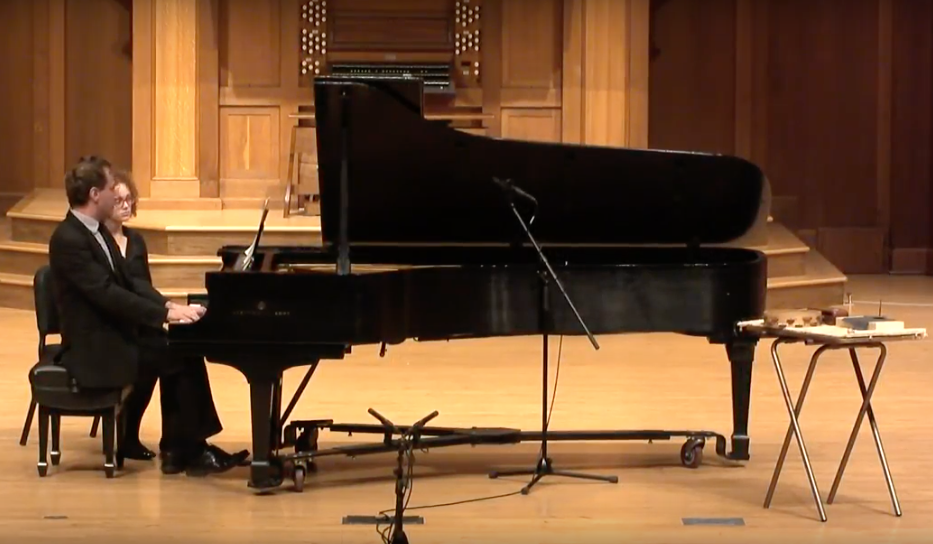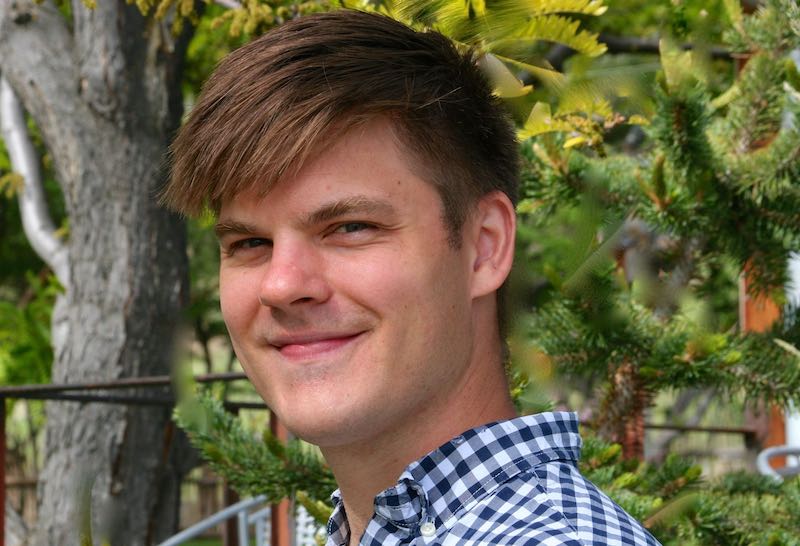David Werfelmann is an award-winning American composer of instrumental, vocal, and electronic music whose works are widely performed and recorded by ensembles and soloists throughout the United States. His orchestral music has been performed by the Milwaukee Symphony Orchestra as well as the major orchestras of the USC Thornton School of Music, IU Jacobs School of Music, and the Lawrence University Conservatory of Music. Check out his bio for the many and varied ensembles and quartets that perform his work. When David was at PLAYA in June this year (2018), he dove into finishing a composition that had to be completed before his departure day. Between that and the many hikes he took, his days were full but, as he describes below, relaxed.
Fortunately, before David left to return to his busy life, he treated us to a sample of work composed before his arrival, Suite á l’antique, performed by Michael Mizrahi, piano. Listen to it here. The beauty of that piece has stayed with us, associated now with the spaciousness of the playa outside the Commons windows.
David, what led you to PLAYA?
For the past four summers, I’ve been seeking out residency opportunities that give me time and space to focus on my creative work. I’ve been to New York, Wyoming, Alaska, and now Oregon, each offering a unique experience. These residencies have proven to me how important seclusion and natural beauty are to my creative process and my ability to write thoughtful, inspired music. When I discovered PLAYA among the residency listings, it seemed to be a perfect blend of these qualities. My experience this summer confirmed this to be true.
Did you come to work on a specific project? If so, did you make progress on it?
I had a specific goal to complete a large work for a’cappella choir. Before coming to PLAYA, I had collected all the text that I would use (excerpts from Johannes Kepler’s Harmonices Mundi) and had begun sketching portions of the piece, but I did the vast majority of the writing and editing while in residence at PLAYA. Though it can be stressful to work to a deadline (the piece was needed by the conductor during my residency), I felt incredibly relaxed throughout the writing process. This is largely a result of how unstructured my time was at PLAYA. I felt liberated to spend my mornings and afternoons working as much (or as little) as my focus and imagination would allow. I was able to finish the piece, 19 minutes of music, by my third week at PLAYA and spent the remainder of the month reading, hiking, and sketching future projects.

Pianist Michael Mizrahi performs David Werfelmann’s Suite a l’antique.
How do you think the land- and waterscapes here affected your work?
I have this wonderful photo I took of the view from my studio at PLAYA: desk and laptop in the foreground and a stunningly gorgeous view of the pond and lake in the background. When I show it to people, they often ask (after the initial “oohs” and “ahs”) how I could have gotten anything done with that spectacular view as a distraction. In truth, watching the colors of the playa change with the sky, hearing the birds chirp and sing, and taking impromptu walks up the hillside were powerful motivators that kept me focused on my work each day. The rich, vibrant landscapes at PLAYA fueled my day-to-day work in a way I would never experience at home in the city.
Describe your typical day at PLAYA.
Each morning, I would awake with the sun rising over the playa. After taking in the view (it never got old), I would make some coffee and breakfast and spend an hour or two reading outside on my porch. Then, I would enter my studio and begin work for the day. Whenever I would get hungry, I might head to the Commons to get some leftovers, or I would make something in my kitchen and spend an hour or two reading or sitting by the pond. Back in the studio, I would work another few hours. On most days I would take a walk in the late afternoon, usually in the hills that overlook Summer Lake. I looked forward to the group dinners twice a week, when I usually spent an hour or two interacting with the other residents. Then, depending on my mood, I might spend another hour or two in the studio working or spend some more time socializing over wine. Before bed, I would always take a few minutes to be amazed by the stars, which shine brilliantly at PLAYA.
What were some highlights for you?
Shawna’s delicious meals and the fellowship with other residents at the group dinners were major highlights for me. I met some incredible people at PLAYA, and I will always remember them. But perhaps a single experience that stands out the most to me is the 10-mile hike I went on in the Fremont National Forest, just a 20-minute drive southwest of PLAYA. After a long month of focused creative work, it was elating to be surrounded by nature, wildlife, and fresh air.
Anything else you want to add?
I am grateful for my experience at PLAYA. It is not only located in a sublime part of the world, but it is also run by people who understand the needs of artists, making this one of the most productive residencies in my experience. I hope to return one day.
Edge effects in ecological science are the “influences of border communities upon each other” (Brittanica.com). PLAYA alumni, friends, guests, and neighbors are invited to submit blog posts that explore the diverse influences experienced here or because of time spent with us—whether the effects are among disciplines, environments, relationships, or communities. Email PLAYA’s Executive Director to join this conversation.

